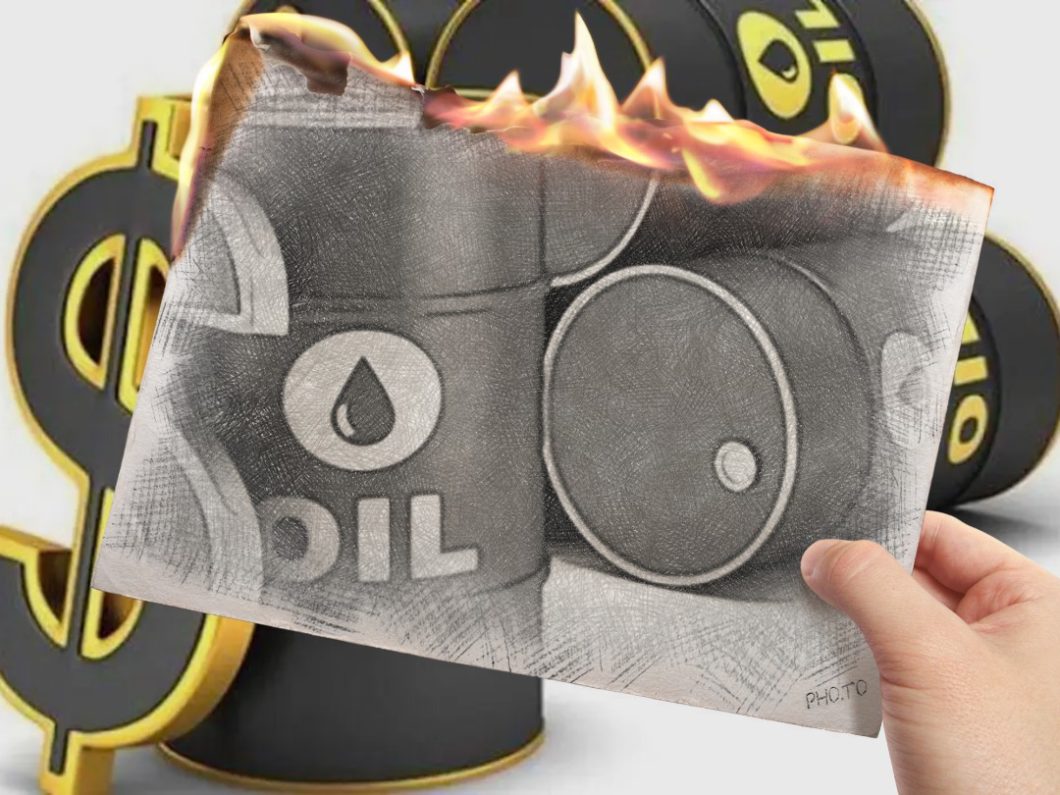alks of oil & gas producers ditching the US dollar are common these days. most people do not realize:
- pricing oil in US dollars is one thing, and
- getting revenues in non-dollar currencies is another
The currency that is used to price oil must have all of these three characteristics:
- liquidity
- relative stability
- global acceptability
There is no currency in the world today that can compete with the US dollar. Global oil trade this year will reach 2.6 trillion dollars. While some currencies are more stable than the US dollar, it doesn’t have the same liquidity, and definitely does not have the same global acceptance.
While China has an oil exchange where contracts are denominated in yuan, the price in yuan is mirror image of the dollar-denominated contracts on the Dubai exchange, once adjusted for timing, geographic location, and crude quality.
Why has OPEC continued to price its oil in US dollar?
OPEC has done extensive research on ways to price. Researchers and consultants decided to keep the dollar pricing simply because it’s the best choice. There is no conspiracy here as circulated among certain groups. It’s not a ‘petro dollar’ thing.
In addition to liquidity, relative stability, and global acceptability, OPEC learned that pricing in any single currency has the same problems.
Switching, now, to euro, for example This would have the same problems like the dollar. Also, since the US is the largest producer of oil and the largest consumer in the world, any pricing in a single currency means a conversion from the dollar pricing just like the yuan pricing mentioned above: oil will remain priced in US dollars and other currencies will be used to reflect the prevailing exchange rates.
OPEC cannot price its oil in a basket of currencies.
OPEC members are scattered geographically and traditionally have different trade partners.
At the end, oil exports are measured by the amount of goods and services a barrel of oil can buy. Any basket will benefit some members and hurt others. Even if they agree on a basket of currencies, its cost prohibits adoption. It needs to be managed continuously by a world-class experts who will keep changing the content of the basket, a situation that might increase volatility, which violates the second condition mentioned above.
Revenues vs. Pricing
Oil will remain priced in US dollars, but oil producers can switch their revenues into any currency they want.
Switching revenues and funds to ‘no-dollar’ currencies eats into the dollar share, but does not eliminate its dominance.
- If Saudis Arabia switches its oil revenues from China oil sales into yuan, the amount is small, about $50 billion. US trade alone is more than $5 trillion and the value of global oil trade this years is about $2.6 trillion
- If Saudi Arabia accepts yuan as a form of payment instead of the dollar, let us remember that it is pegged to the dollar
If ditching the dollar is a market-supported choice, why are only the oil-producing countries that the US has imposed sanctions on ‘ditching’ the US dollar?
Putin request that “unfriendly” countries pay for Russian gas in rubles is more of a political stunt than an effective policy. There are several legal, economic and technical issues that will limit the use of rubles.
In addition, the ban by other nations on dealing with Russian banks and reluctance of banks and exchange shops to deal with rubles make the ruble a currency on the sidelines of the international monetary system.
The more Putin pushes others to use the ruble, the more people will shy away from holding rubles. Meanwhile, Russians are hording gold, dollars and Euros. They will sell and buy in ruble per Gresham’s law: “bad money drives out good.”
To conclude: oil will remain priced in dollars. Switching oil & gas revenues to ‘no-dollar’ currencies doesn’t dethrone the dollar or reduce its dominance.
Guest post by Dr. Anas F. Alhajji, the Editorial Advisor for www.attaqa.net and the Managing Partner at Energy Outlook Advisors LLC, and former Chief Economist of NGP Energy Capital Management. His twitter account is a must follow @anasalhajji
